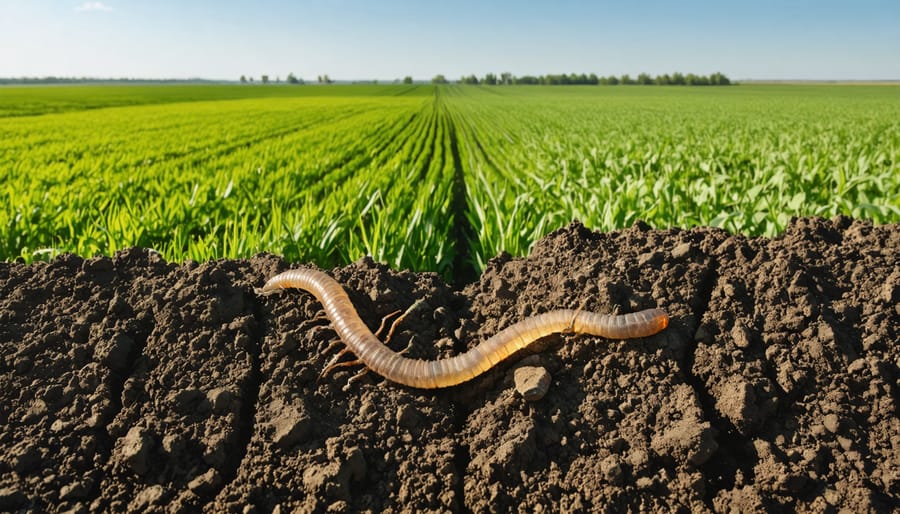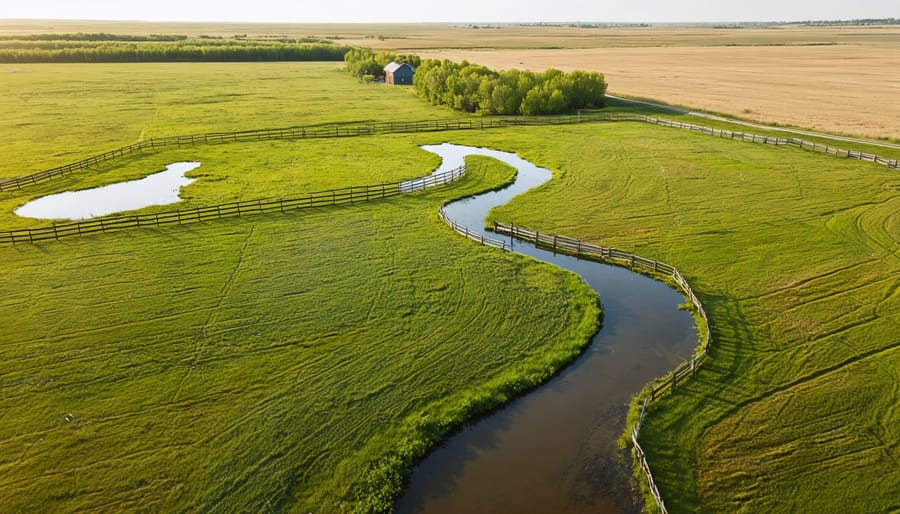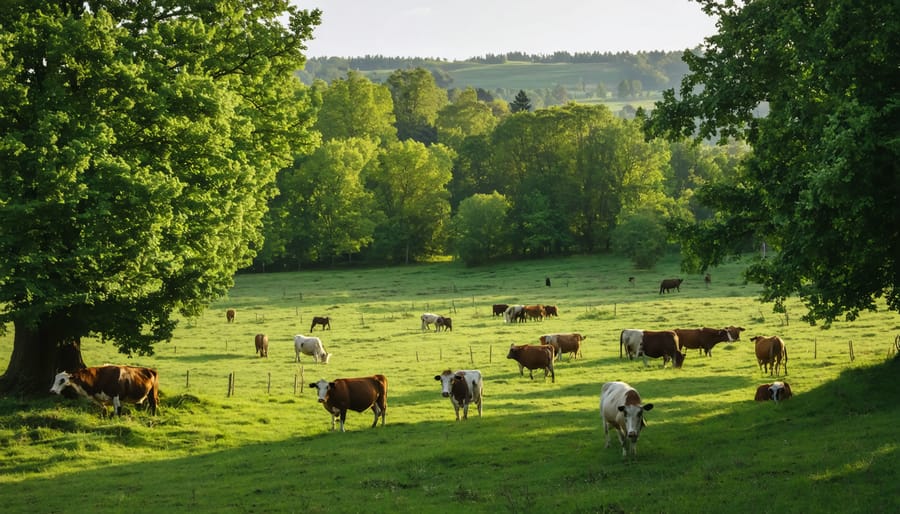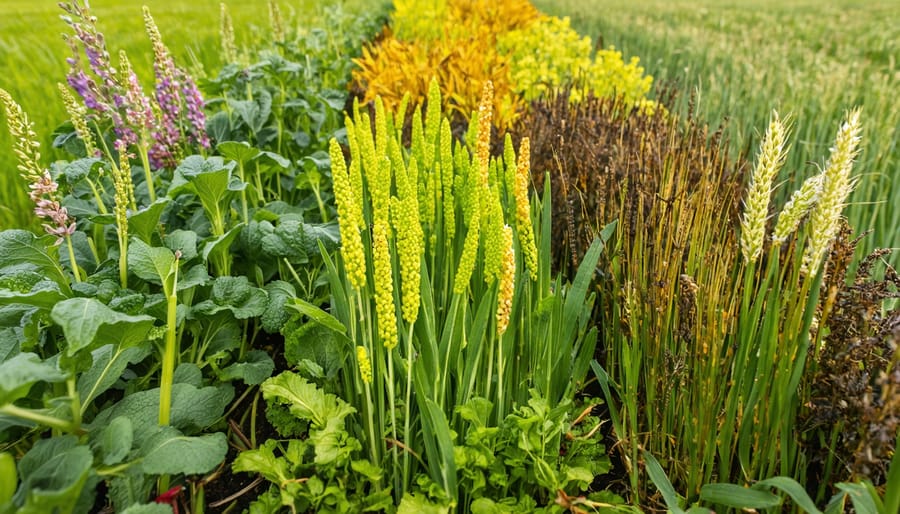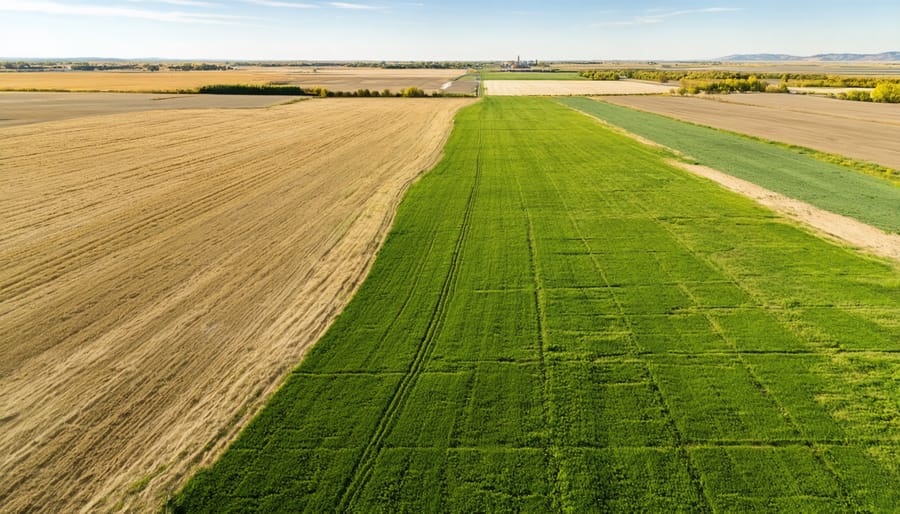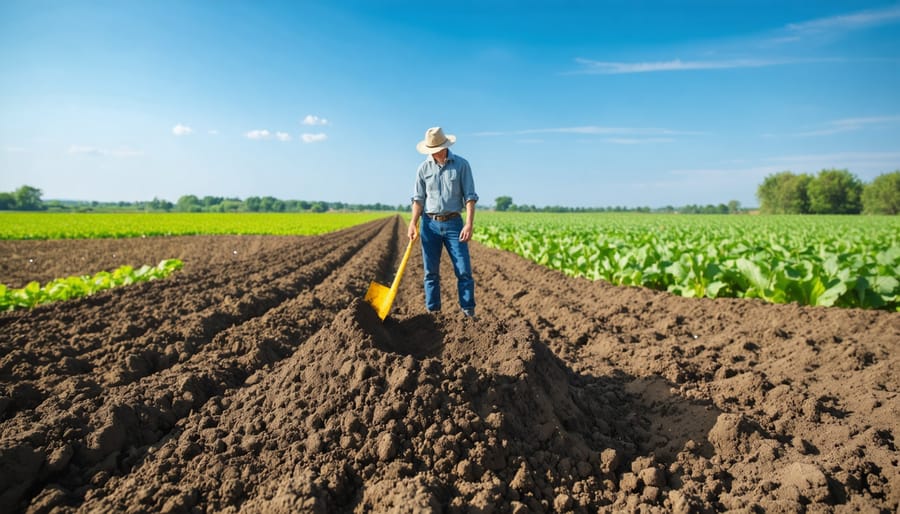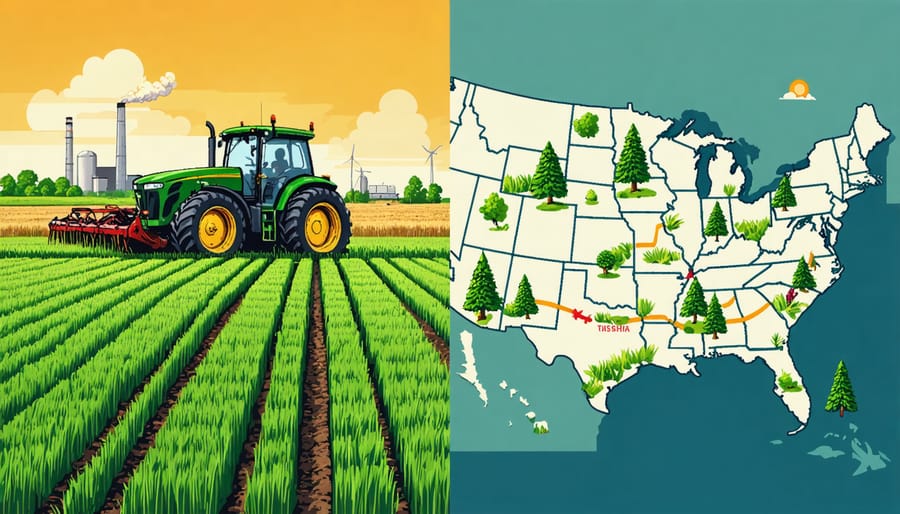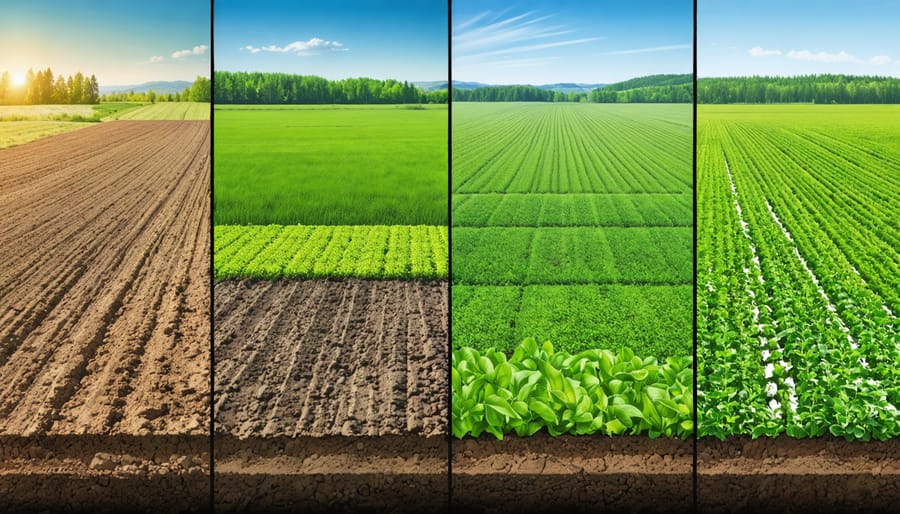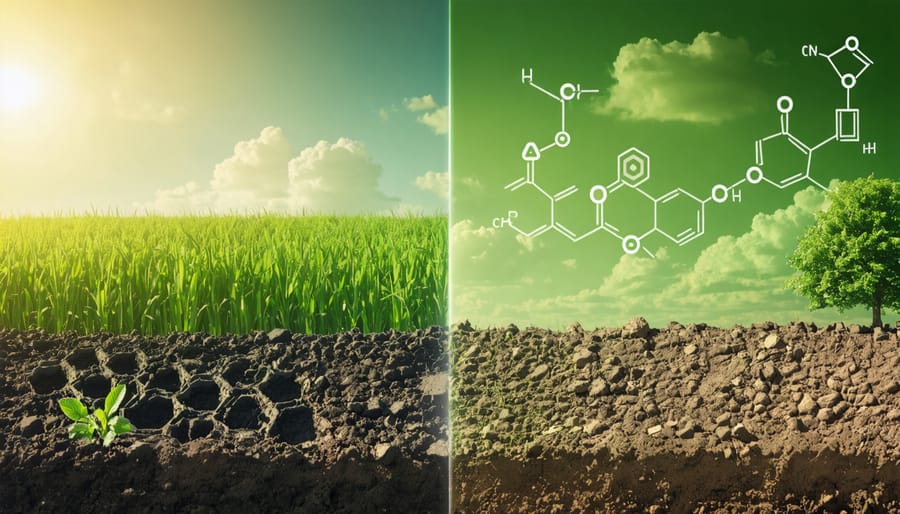Alberta farmers are actively turning fields into climate solutions through proven soil carbon sequestration practices. Every tonne of carbon stored in agricultural soils not only fights climate change but also builds soil health, increases water retention, and boosts crop yields. With Canadian farmland holding potential to sequester up to 78 million tonnes of CO2 annually, practical methods like cover cropping, reduced tillage, and strategic crop rotation can transform ordinary fields into powerful carbon sinks. These techniques have already helped Alberta farmers increase soil organic matter by up to 2% while generating additional revenue through carbon offset programs. By implementing these science-backed practices, producers across the prairie provinces are simultaneously improving their bottom line and contributing to Canada’s climate goals. The time-tested methods outlined in this guide offer clear, measurable steps to enhance both farm productivity and environmental stewardship, backed by decades of successful implementation across Alberta’s diverse agricultural landscape.
How Alberta’s Soil Becomes a Carbon Champion
The Science of Soil Carbon Storage
Think of soil as nature’s carbon bank account. When plants photosynthesize, they pull carbon dioxide from the air and convert it into sugars and other carbon compounds. As plants grow and eventually die, this carbon moves into the soil through their roots and decomposing organic matter.
In healthy soil, carbon becomes stored in two main ways. First, it becomes part of the soil’s organic matter – those rich, dark compounds that give good soil its colour and structure. Second, it gets protected within soil aggregates, those small clumps of soil particles that form when organic matter binds with clay and minerals.
Here in Alberta, our prairie soils have excellent potential for carbon storage. A single hectare of well-managed farmland can store several tonnes of carbon, equivalent to taking multiple cars off the road. Beyond climate benefits, soil carbon improves water retention, reduces erosion, and boosts crop yields by enhancing soil structure and nutrient availability.
The key is maintaining the right conditions – like keeping soil disturbance minimal and ensuring continuous plant cover – to help this natural carbon storage system work effectively.
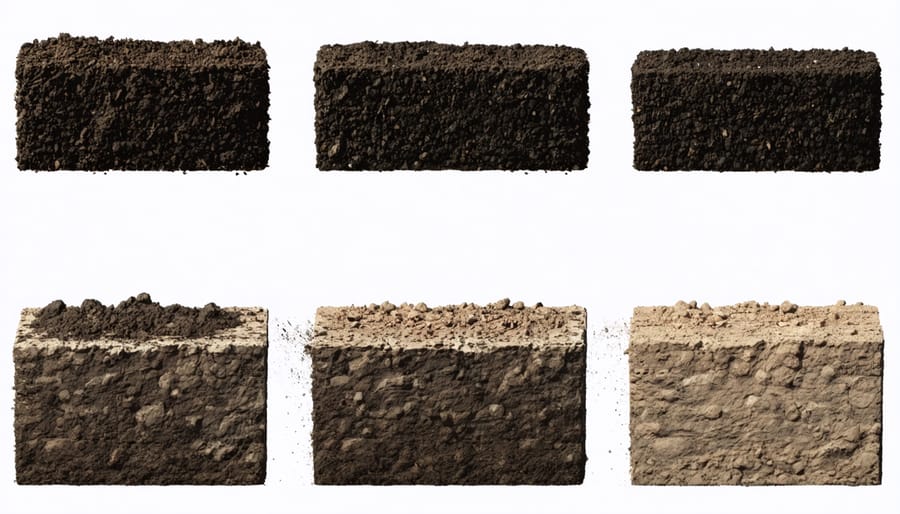
Why Alberta’s Soil Has Special Potential
Alberta’s rich agricultural landscape offers exceptional potential for carbon sequestration, thanks to Alberta’s unique soil conditions. Our province’s deep, fertile Black and Dark Brown Chernozemic soils naturally contain high levels of organic matter, making them ideal for storing additional carbon.
The combination of our cool climate and relatively low decomposition rates means that organic matter tends to accumulate more readily here than in warmer regions. Our prairie soils, developed under grassland vegetation over thousands of years, have built-in structural characteristics that support carbon storage, including well-developed aggregates and extensive root systems.
Additionally, Alberta’s semi-arid climate, with its distinct wet and dry cycles, has created soil conditions that are particularly responsive to conservation management practices. Our shorter growing season actually works in our favour for carbon sequestration, as it slows down organic matter breakdown while still supporting robust plant growth during the peak season.
These natural advantages, combined with proper management techniques, position Alberta’s farmers to be leaders in agricultural carbon storage solutions.
Proven Techniques That Boost Soil Carbon Storage
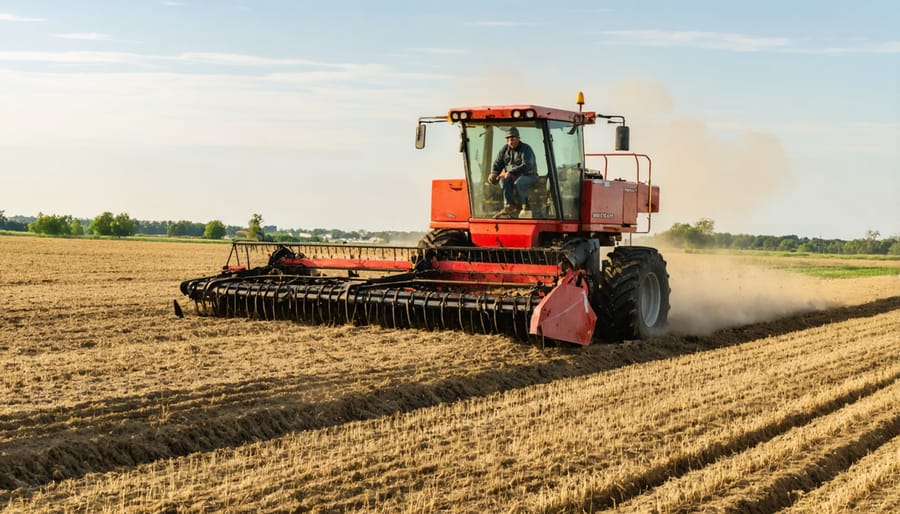
No-Till Farming Success Stories
Meet John Anderson, a third-generation farmer from Lacombe County, who transformed his 2,000-hectare operation through no-till farming practices. After switching to no-till methods in 2015, Anderson witnessed a 30% increase in soil organic matter within five years, while reducing his fuel costs by $45,000 annually.
“The soil structure improvement has been remarkable,” says Anderson. “We’re seeing earthworms return and better water retention during dry spells. Our yields have remained stable, and in some years, even improved.”
In Strathmore, Sarah Mitchell’s family farm tells a similar success story. Their 1,200-hectare operation adopted no-till methods in 2018, incorporating cover crops into their rotation. Mitchell reports a 40% reduction in soil erosion and estimates sequestering an additional 2.5 tonnes of carbon per hectare annually.
The Prairie Soil Solutions Collective, a group of 15 Alberta farmers, documented their transition to no-till farming over three years. Their combined data shows an average 25% reduction in input costs and improved drought resilience across various soil types. Group member Tom Peterson notes, “The initial adjustment period requires patience, but the long-term benefits to both our soil health and bottom line make it worthwhile.”
These success stories demonstrate how Alberta farmers are leading the way in sustainable agriculture while maintaining profitable operations.
Cover Crops That Work in Our Climate
Alberta’s climate presents unique opportunities for cover crop selection, with our short growing season and variable moisture conditions requiring strategic choices. Through extensive field trials and farmer experiences across the province, several cover crop species have proven particularly effective for carbon sequestration.
Cold-hardy options like fall rye and winter triticale excel in our region, establishing quickly after harvest and providing excellent soil coverage through winter. These crops can be planted as late as September and still establish well enough to protect soil and capture carbon before winter sets in.
For spring planting, field peas and oats make an excellent combination, offering both nitrogen fixation and robust biomass production. Hairy vetch has also shown promising results, particularly when paired with cereal rye, creating a diverse root system that enhances soil structure and carbon storage.
In areas with adequate moisture, red clover serves as an excellent underseed in cereal crops, continuing to grow after harvest and building soil carbon through its extensive root system. For drier regions, drought-tolerant options like forage radish and Persian clover have demonstrated good performance while requiring minimal moisture.
When selecting cover crops, consider your specific soil type, typical moisture conditions, and planned rotation. Many Alberta farmers have found success with cocktail mixes, combining 3-4 species to maximize benefits and spread risk across varying seasonal conditions.
Crop Rotation Strategies
In Alberta’s diverse agricultural landscape, implementing strategic crop rotation patterns can significantly boost soil carbon storage while maintaining farm productivity. Local success stories, like the Thompson family farm near Red Deer, demonstrate how thoughtful rotation planning can increase soil organic carbon by up to 15% over five years.
A winning rotation typically starts with deep-rooted perennial crops like alfalfa, followed by nitrogen-fixing pulses such as field peas or lentils. These crops naturally enhance soil structure and contribute to carbon buildup. Following these, cereals like wheat or barley can be planted to maximize residue return to the soil.
For optimal carbon sequestration, consider this proven three-year rotation pattern:
– Year 1: Deep-rooted perennials (alfalfa or clover)
– Year 2: Pulse crops (peas, lentils, or faba beans)
– Year 3: Cereals (wheat, barley, or oats)
Including cover crops between main growing seasons keeps living roots in the soil year-round, which is crucial for carbon storage. Prairie farmers have found that cold-hardy species like fall rye or winter wheat work well in our climate.
Remember to adjust your rotation based on your specific soil type and local conditions. The key is maintaining diverse root systems throughout the rotation cycle while ensuring each crop contributes to building soil organic matter. Consider partnering with local agricultural extension services for personalized rotation planning suited to your farm’s unique needs.
Measuring Your Soil’s Carbon Success
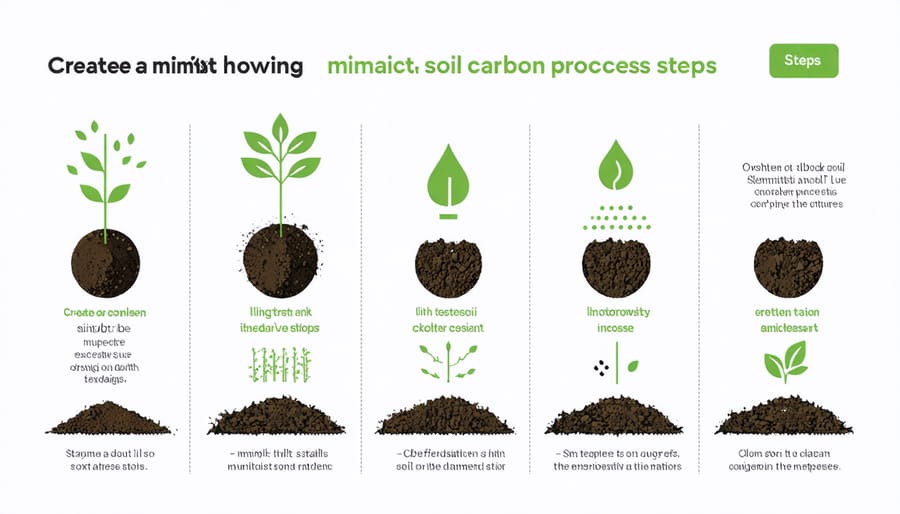
Simple Testing Methods
Monitoring your soil’s carbon levels doesn’t have to be complicated or expensive. Here in Alberta, several straightforward testing methods have proven effective for farmers looking to track their sequestration progress.
The shovel test is one of the simplest starting points. Dig about 30 centimetres deep and examine your soil’s colour – darker soil typically indicates higher organic carbon content. Check the soil’s structure too; well-aggregated soil with a crumbly texture often suggests good carbon levels.
The water infiltration test is another practical method. Push a 15-centimetre diameter pipe about 12 centimetres into the ground and pour one litre of water inside. Time how long it takes to absorb completely. Faster absorption often indicates better soil structure and higher carbon content.
For a more detailed assessment, you can use the squeeze test. Take a handful of soil and squeeze it firmly. Soil rich in organic carbon will hold its shape when you open your hand and break apart easily when touched. If it’s either too loose or too compact, you might need to adjust your management practices.
Many local agricultural extension offices offer basic soil testing kits at reasonable prices. These kits can provide a good baseline for your carbon sequestration journey. For best results, take samples from multiple spots in your field and test seasonally to track changes over time.
Remember, while these methods aren’t as precise as laboratory testing, they’re valuable tools for ongoing monitoring and can help you make informed decisions about your soil management practices.
Track Your Progress
Keeping detailed records of your soil carbon journey is crucial for success and potential carbon credit opportunities. Start by establishing baseline measurements through comprehensive soil testing, documenting current carbon levels, organic matter content, and soil structure. Take photos of your fields and record initial observations about soil health indicators like earthworm counts and water infiltration rates.
Create a digital or physical logbook to track your management practices throughout the seasons. Record dates of cover crop planting, tillage operations (or lack thereof), and any amendments applied. Using smartphone apps or specialized farm management software can streamline this process and help you spot trends over time.
Set realistic benchmarks based on your soil type and local conditions. Consider working with neighbouring farmers to compare notes and share success stories. Many Alberta farmers have found that tracking progress in 3-5 year intervals provides the most meaningful data, as soil carbon changes typically occur gradually.
Remember to document:
– Annual soil test results
– Management practices and timing
– Weather conditions and seasonal variations
– Crop yields and residue management
– Visual soil observations and photographs
– Equipment adjustments and modifications
Join local soil health monitoring networks or partner with agricultural extension services to validate your measurements. This not only improves accuracy but also connects you with other farmers working toward similar goals. Regular monitoring helps you adjust your practices for optimal results and provides valuable data for carbon credit programs.
Financial Benefits of Carbon Farming
Alberta’s Carbon Credit Programs
Alberta leads Canada in recognizing and rewarding farmers for their role in carbon sequestration through various carbon credit opportunities. The province’s Carbon Offset System allows agricultural producers to earn credits for implementing approved protocols that enhance soil carbon storage. Currently, farmers can earn between $15 and $30 per tonne of CO2 equivalent sequestered, with rates varying based on market conditions and verification methods.
To participate, farmers need to:
1. Document baseline soil carbon levels
2. Implement approved practices like reduced tillage or cover cropping
3. Register with an aggregator who helps manage the verification process
4. Maintain detailed records of management practices
5. Complete third-party verification every five years
The Agriculture Financial Services Corporation (AFSC) provides support through their local offices to help farmers navigate the application process. Several aggregator companies in Alberta, including Carbon Credit Solutions and Farmers Edge, work directly with producers to bundle credits and handle the documentation requirements. First-time participants can access free consultation services through Alberta Agriculture and Forestry’s regional offices to understand their eligibility and potential returns.
Long-term Cost Savings
Beyond carbon credit revenues, soil carbon sequestration offers substantial long-term financial benefits for Alberta farmers. Many producers report significant reductions in input costs within 3-5 years of implementing carbon-friendly practices. For instance, farms using cover crops and reduced tillage typically see a 20-30% decrease in fertilizer expenses due to improved nutrient cycling and soil health.
Local farmer Mike Thompson from Red Deer County shares that his operation has cut irrigation costs by 25% since adopting regenerative practices five years ago. The improved soil structure and organic matter content have enhanced water retention, requiring less frequent irrigation cycles.
Equipment and fuel savings are equally impressive. With reduced tillage practices, farmers often report 40-50% lower fuel consumption and decreased machinery maintenance costs. The reduction in field operations also means less wear and tear on equipment, extending its service life.
Additionally, healthy soils rich in organic carbon show better resilience to extreme weather events, potentially reducing crop insurance premiums and minimizing yield losses during challenging seasons. These combined savings typically range from $50-100 per hectare annually, creating a compelling business case beyond environmental benefits.
As we’ve explored throughout this article, soil carbon sequestration offers Alberta farmers a powerful opportunity to combat climate change while improving their land’s productivity. The science is clear: our agricultural soils have the potential to store significant amounts of carbon while building resilience against extreme weather events.
By implementing practices like reduced tillage, cover cropping, and rotational grazing, you’re not just helping the environment – you’re investing in your farm’s future. These methods improve soil structure, increase water retention, and boost crop yields, creating a win-win situation for both your bottom line and the planet.
Remember, you’re not alone in this journey. Alberta’s agricultural community is leading the way in sustainable farming practices, with numerous success stories from fellow farmers who’ve already embraced these changes. The growing carbon credit market and available government incentives make this an ideal time to start or expand your soil carbon sequestration efforts.
Every hectare matters, and every farmer’s contribution counts. Whether you’re just starting to explore these practices or looking to enhance your existing methods, the resources and support are available to help you succeed. By working together, Alberta’s farming community can make a significant impact on climate change while building a more sustainable and profitable agricultural future.
Take that first step today – your soil, your farm, and future generations will thank you for it.

